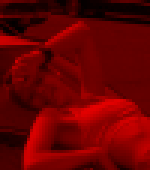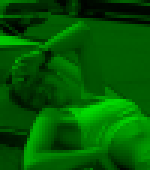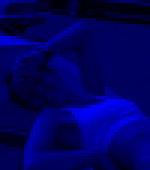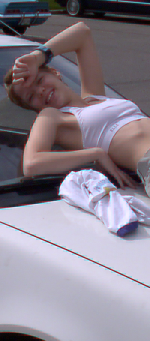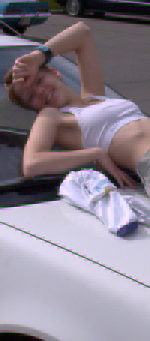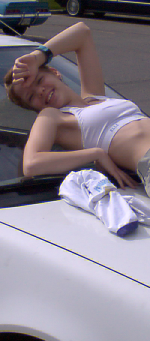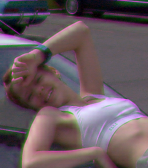
|
nfg.2y.net Games Division Note: The images and information on this page are free to use but please link to this page if you do! |
||||||||||||
|
This page is an updated version of this one where Traci first appeared as our guinea pig. The deficiencies in human vision are many, but few are as striking and demonstrable as this one. It's a fact that our perception of colour is not as detailed as our perception of black and white. This is the primary reason the NTSC standard works as well as it does - we can't tell that it's ripping us off. If it looks just as good then it must be jsut as good, right?
What you're about to see is incontrovertible proof that your eyes suck at blue. It's totally true - you see more details in green colours than red or blue, and you might be surprised how far you can go before you notice any actual difference in image quality. Now, please meet Traci:  This is an unmodified picture, straight off the digicam and reduced in size. Now what I'm going to do is reduce this image into its primary colour components, each consisting of a single hue image of 256 shades: one red, one green, one blue. If you look closely you may notice the blue one looks kind of dark and blurry, and the green one looks pretty clear.  The same image in 4 flavours. If you combine the three single-colour images you'll end up with the one on the left. The next step is to reduce the resolution of one layer, and recombine the images. Here's a small version of what each slice looks like when there is a 3x reduction in detail. Each pixel in these images is nine times larger than the ones above.
The above images are reduced in a very granular fashion - the pixels are large and square edged. If you were to increase their size in a fashion that blurred them, similar to how JPG, DVD + NTSC do, you'd be able to get away with much greater reductions without noticing much reduction in quality. Consider the following images, which were reduced by a factor of four, instead of 3 as above:
You sure notice when someone tampers with your green!! The difference with red is certainly noticable, but not to the same extent that the green channel is. Mucking with the blue channel of course leaves you with basically no effect. This is how DVDs work: a high res green image and two low-res images, one for red, one for blue. Please check this page for visual evidence of the effect this chroma subsampling can have on JPG images, and ways you can avoid it. |
